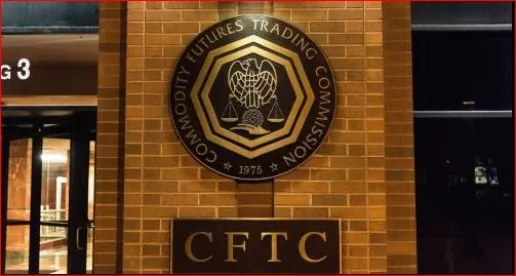Introduction
The Commodity Futures Trading Commission (CFTC) recently voted 3–2, along party lines, to approve a final rule (Final Rule) regarding position limits for certain futures contracts and economically equivalent swaps.1 The Final Rule ends a decade-long saga in which the CFTC proposed, amended, and re-proposed its position limit rules and aggregation standards for speculative positions due to certain amendments to the Commodity Exchange Act (CEA) by the Dodd-Frank Wall Street Reform and Consumer Protection Act of 2010 (Dodd-Frank Act).2 Chairman Tarbert, in supporting the Final Rule, explained that it (i) balances the interests of all market participants, (ii) leverages the flexibility of exchanges to adjust for a particular market, and (iii) provides a solid methodology for determining when position limits are necessary.3
The Final Rule closely follows the rule proposal released by the CFTC in January 2020 (the Proposed Rule). However, the CFTC did make a few alterations in the Final Rule. This alert (i) highlights key compliance dates for market participants, (ii) provides practical considerations for firms impacted by the Final Rule, (iii) provides a list of the position limits, (iv) explains certain differences between the Proposed Rule and the Final Rule, and (v) summarizes key aspects of the Final Rule.
The Final Rule will become effective 60 days after publication in the Federal Register.4
Rule Summary
The CFTC enforces position limits for futures and options on futures contracts as authorized by the CEA. The CEA empowers the CFTC to limit the number of derivative contracts that can be owned by any one person or group in order to prevent derivatives from being used to exercise undue control on a market, which can cause sudden or unreasonable fluctuations in price. Furthermore, through the Dodd-Frank Act, Congress charged the CFTC to update its regulations on position limits to prevent excessive speculation and manipulation while ensuring sufficient market liquidity for bona fide hedgers and protecting the price discovery process. In the Final Rule, the CFTC confirmed that federal speculative position limits are necessary for 25 core referenced futures contracts and for any futures contracts and options on futures contracts that are linked to those contracts.5 The 25 core referenced futures contracts include the nine “legacy” agricultural contracts that are currently subject to federal position limits and 16 additional non-legacy contracts.6
The nine legacy contracts are subject to two types of position limits: (1) a position limit that applies in the spot month only and (2) a position limit that applies in any single non-spot month as well as all months combined. Both types of position limits have been updated by the Final Rule. Significantly, the new spot month position limit is higher than or equal to current federal and exchange-set spot month position limits. The new single non-spot month and all-months-combined position limits are also higher than or equal to the respective current federal and exchange-set limits.
Although the 16 new non-legacy contracts will be subject to federal position limits for the first time under the Final Rule, these non-legacy contracts are, currently, already subject to exchange-set limits. Notably, the new federal position limits for the 16 non-legacy contracts are higher than or equal to current exchange-set limits, with the exception of NYMEX Palladium (PA). See the New Position Limits table below for a complete list of all the new federal position limits.
The CFTC also adopted federal position limits on cash-settled futures and options on futures that are directly or indirectly linked to physically settled contracts in order to further the statutory objective in Section 4a(a)(3)(B)(iv) of the CEA—the deterrence and prevention of market manipulation.7 In taking this step, the CFTC stated that, in the absence of position limits, an entity with positions in both the physically delivered and cash-settled contracts may have an increased ability and an increased incentive to manipulate one of these contracts to benefit positions in the other contract.
To prevent evasion through the creation of economically equivalent futures contracts that do not directly reference the price of the core referenced futures contracts, the CFTC determined that futures contracts and options on futures contracts that are indirectly linked to the core referenced futures contracts will be subject to the position limits in the same manner as the referenced futures contracts. Futures that settle to the price of a referenced contract but not to the price of a core referenced futures contract would be indirectly linked to the core referenced futures contract as “economically equivalent swaps.”
Key Compliance Dates
- Effective date for the Final Rule. This is the compliance date on which the higher federal position limits for the nine legacy agricultural contracts will become effective. Exemptions under the new enumerated bona fide hedges will become available starting on this date.
- 1 January 2022 – New contracts become subject to position limits. This is the compliance date on which 16 non-legacy contracts and any associated referenced contracts (other than economically equivalent swaps) will become subject to federal position limits for the first time under the Final Rule.
- 1 January 2022 – Establishment of Exchange Limits. This is the compliance date for establishing exchange-set position limits and exemptions, as well as data sharing between exchanges and the CFTC, as required by the Final Rule.
- 1 January 2023 – Federal speculative position limits apply to economically equivalent swaps. This is the compliance date on which swaps that are economically equivalent to covered futures contracts become subject to federal position limits. Additionally, the elimination of certain existing risk management exemptions becomes effective on this date.
Practical Considerations
- All market participants, including commercial end-users, private funds, and investment managers, should look out for the follow-on activity that will occur when futures exchanges and swap execution facilities amend their rules regarding positions limits. Updates to internal procedures related to positions limits must take into account these upcoming exchange-set position limits, which may be lower than the new federal position limits.
- With few exceptions, market participants, including asset managers, will no longer be allowed to treat a futures position or transaction as a bona fide hedge simply because it was entered into for “risk management purposes.” As a result, market participants should update their policies and procedures to ensure that future hedging transactions will comply with the Final Rule’s new bona fide hedging exemptions and consider any necessary adjustments to their business in advance of 1 January 2023. For more information, see our section on Bona Fide Hedges below.
- The Final Rule extends the CFTC’s existing aggregation rules to the 16 new non-legacy contracts.8 The current aggregation rules generally require market participants to aggregate positions among holding companies and subsidiaries unless certain exceptions apply.9 Market participants that trade positions in the non-legacy contracts will need to familiarize themselves with the CFTC’s aggregation standards and relevant exemptions for futures (and equivalent swaps) positions. Moreover, they must update their internal procedures to ensure compliance across various business units, instead of in individual business units on a standalone basis.
- As noted in our Client Alert on the 27 February 2020 Proposed Rule, the new streamlined process for exchange-based filings for non-enumerated bona fide hedge exemptions (i.e. hedges that are not specifically listed in the regulations) should be welcomed by market participants considering innovative new uses for derivatives that hedge underlying commodity risks.
- Swap dealers are permitted to rely on their counterparty’s representation that a trade is a bona fide hedge. Swap dealers will welcome this clarification, and it should help expedite the trading onboarding process for all parties to a trade that is a bona fide hedge.
- Form 204 will be phased out before 1 January 2022. The requirement to submit Form 204 will end on the date when the exchanges implement the new position limit rules that will allow them to receive cash-market information. Exchanges have until 1 January 2022 to implement these rules.
The New Position Limits
| Core Referenced Futures Contract | New Federal Spot Month Limit Level | New Federal Single Month and All-Months-Combined Limit Levels |
|---|---|---|
| Legacy Agricultural Contracts | ||
| CBOT Corn (C) | 1,200 | 57,800 |
| CBOT Oats (O) | 600 | 2,000 |
| CBOT Soybeans (S) | 1,200 | 27,300 |
| CBOT Soybean Meal (SM) | 1,500 | 16,900 |
| CBOT Soybean Oil (SO) | 1,100 | 17,400 |
| CBOT Wheat (W) | 1,200 | 19,300 |
| CBOT KC Hard Red Winter Wheat (KW) | 1,200 | 12,000 |
| MGEX Hard Red Spring Wheat (MWE) | 1,200 | 12,000 |
| ICE Cotton No. 2 (CT) | 900 | 5,950 (single month) 11,900 (all-months-combined) |
| Other Agricultural Contracts | ||
| CME Live Cattle (LC) | 600/300/20010 | |
| CBOT Rough Rice (RR) | 800 | |
| ICE Cocoa (CC) | 4,900 | |
| ICE Coffee C (KC) | 1,700 | |
| ICE FCOJ-A (OJ) | 2,200 | |
| ICE U.S. Sugar No. 11 (SB) | 25,800 | |
| ICE U.S. Sugar No. 16 (SF) | 6,400 | |
| Metal Contracts | ||
| COMEX Gold (CG) | 6,000 | |
| COMEX Silver (SI) | 3,000 | |
| COMEX Copper (HG) | 1,000 | |
| NYMEX Platinum (PL) | 500 | |
| NYMEX Palladium (PA) | 50 | |
| Energy Contracts | ||
| NYMEX Henry Hub Natural Gas (NG) | 2,00011 | |
| NYMEX Light Sweet Crude Oil (CL) | 6,000/5,000/4,00012 | |
| NYMEX New York Harbor ULSD Heating Oil (HO) | 2,000 | |
| NYMEX New York Harbor RBOB Gasline (RB) | 2,000 | |
Bona Fide Hedges
The Final Rule clarifies the applicable standard for market participants seeking a bona fide hedging exemption from position limits.13 A bona fide hedging transaction may exceed the federal position limits only if the transaction satisfies each of the following elements:
- the position represents a substitute for transactions or positions made or to be made at a later time in a physical marketing channel (temporary substitute test);
- the position is economically appropriate to the reduction of price risks in the conduct and management of a commercial enterprise (economically appropriate test); and
- the position arises from the potential change in value of actual or anticipated assets, liabilities, or services (change in value requirement).14
Notably, this definition tightens the “temporary substitute test” such that a bona fide hedge must be connected to the production, sale, or use of a physical cash-market commodity in all cases, rather than “normally” connected to such activities. As noted above, this adjustment is intended to restrict market participants from treating “risk management” positions as bona fide hedges, except for pass-through or offset positions related to another transaction that is itself a bona fide hedge. The Final Rule also expands the list of enumerated bona fide hedges, which means that any market participant utilizing such a hedge need not notify the CFTC because the enumerated bona fide hedges are self-effectuating.15 However, a market participant would still need to notify the relevant exchange if executing a bona fide hedge would exceed an exchange set position limit.16
In addition, the Final Rule elaborates on how and when a market participant may measure risk on a gross basis rather than on a net basis. Currently, market participants generally may only hedge positons on a net basis. However, the Final Rule permits hedge positions on a gross basis so long as the risk calculations are done consistently over time and not with the intent of evading federal position limits.17
A Streamlined Process for Non-Enumerated Bona Fide Hedges
The Final Rule will ease the administrative burden on market participants by allowing a participant to file a single application to an exchange requesting a non-enumerated bona fide hedge exemption. If the CFTC does not object within the review period of 10 business days (or two business days in the case of sudden or unforeseen bona fide hedging needs) and the exchange approves of the bona fide hedge, the applicant will receive approval from both the CFTC and the exchange’s requirements.
Under the Final Rule, market participants may exceed federal position limits after the exchange’s approval of the application for an exemption, but prior to the expiration of the CFTC’s 10-day review period. This is a change from the Proposed Rule, which required a market participant to wait until the CFTC’s 10-day review period expired before exceeding federal position limits.
Market participants are permitted to enter into hedging transactions while the application is pending, but risk having to unwind the position if the application is rejected by the CFTC. If the CFTC denies an application, a market participant will not be subject to a federal position limits enforcement action, so long as the applicant files the request in good faith and brings the position back into compliance with federal position limits requirements within a commercially reasonable period of time.
Looking Ahead
With the adoption of its position limits rules, the CFTC has completed nearly all of its required rulemakings as mandated by the Dodd-Frank Act. As noted in the Practical Considerations section above, not only do market participants need to evaluate how the Final Rule may impact their business, but they must also be mindful of how individual exchanges amend their own position limits and related requirements in response to this rulemaking.
1 See Press Release, CFTC, Release No. 8287-20, CFTC Finalizes Position Limits Rule at October 15 Open Meeting, (Oct. 15, 2020).
2 Stephen M. Humenik, Clifford C. Histed, Matthew J. Rogers, and Edgar Mkrtchian, The CFTC Once Again Proposes Position Limits for Energy Derivatives related to Oil, Gas and Refined Products. (Mar. 20, 2020).
3 See id.
4 See Final Rule (voting draft), CFTC, Position Limits for Derivatives (Oct. 15, 2020).
5 For ease of presentation, we refer to futures and options on futures contracts as “futures.”
6 Those new categories include seven additional agricultural contracts, four energy contracts, and five metals contracts. Please refer to the New Positions Limit table above for a breakdown of the 25 core referenced futures contracts.
7 The CFTC noted that it considers cash-settled referenced contracts to be generally economically equivalent to physical-delivery contracts in the same commodity.
8 See Aggregation of Positions, Final Rule, 81 Fed. Reg. 91,454 (Dec. 16, 2016); CFTC, Staff Letter No. 17-06, (2017); CFTC, Staff Letter No. 17-37 (2017); CFTC Letter No. 19-19 (July 31, 2019).
9 Id.; See also 17 CFR § 150.4 - Aggregation of positions.
10 The federal spot month limit for CME Live Cattle futures uses the following step-down limit: (1) 600 contracts at the close of trading on the first business day following the first Friday of the contract month; (2) 300 contracts at the close of trading on the business day prior to the last five trading days of the contract month; and (3) 200 contracts at the close of trading on the business day prior to the last two trading days of the contract month.
11 The NYMEX Henry Hub Natural Gas federal spot month limit for cash-settled look-alike referenced contracts will apply on a per-exchange basis rather than on an aggregate basis across exchanges.
12 The federal spot month limit for NYMEX Light Sweet Crude Oil futures contract will use the following step-down limit: (1) 6,000 contracts at the close of trading three business days prior to the last trading day of the contract; (2) 5,000 contracts at the close of trading two business days prior to the last trading day of the contract; and (3) 4,000 contracts at the close of trading one business day prior to the last trading day of the contract.
13 The Final Rule created five categories of exemptions to the federal position limits: (1) bona fide hedging transactions and positions, (2) spread positions, (3) financial distress positions, (4) certain natural gas positions held during the spot month, and (5) pre-enactment and transition period swaps. Only bona fide hedging transactions and positions are discussed in this client alert.
14 Supra note 4 at 24.
15 The additional hedging practices not enumerated in the existing regulation, but included in the Final Rule, include: (1) hedges of anticipated merchandising; (2) hedges by agents; (3) hedges of anticipated royalties; (4) hedges of services; and (5) offsets of commodity trade options.
16 Supra note 4 at 176.
17 Supra note 4 at 391.





 />i
/>i

